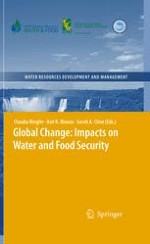2010 | OriginalPaper | Buchkapitel
5. Implications of Globalization and Trade for Water Quality in Transboundary Rivers
verfasst von : Hilary Sigman, Howard F. Chang
Erschienen in: Global Change: Impacts on Water and food Security
Verlag: Springer Berlin Heidelberg
Aktivieren Sie unsere intelligente Suche, um passende Fachinhalte oder Patente zu finden.
Wählen Sie Textabschnitte aus um mit Künstlicher Intelligenz passenden Patente zu finden. powered by
Markieren Sie Textabschnitte, um KI-gestützt weitere passende Inhalte zu finden. powered by
